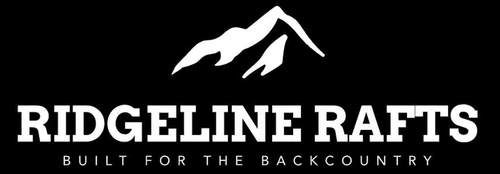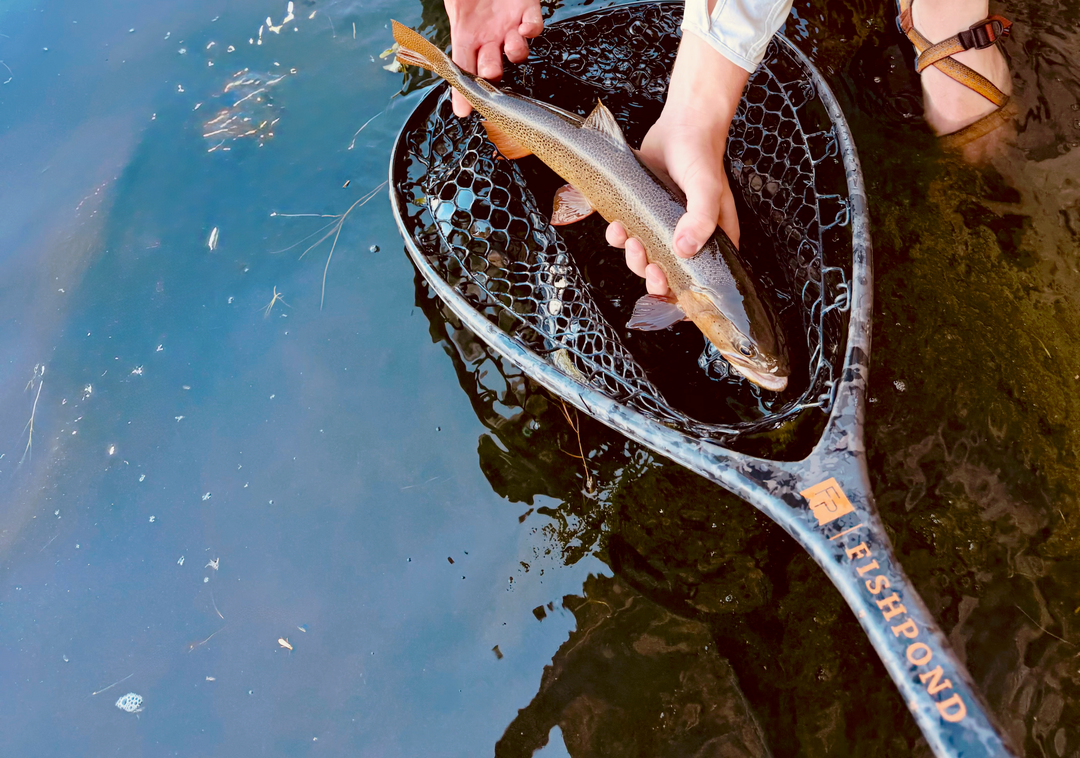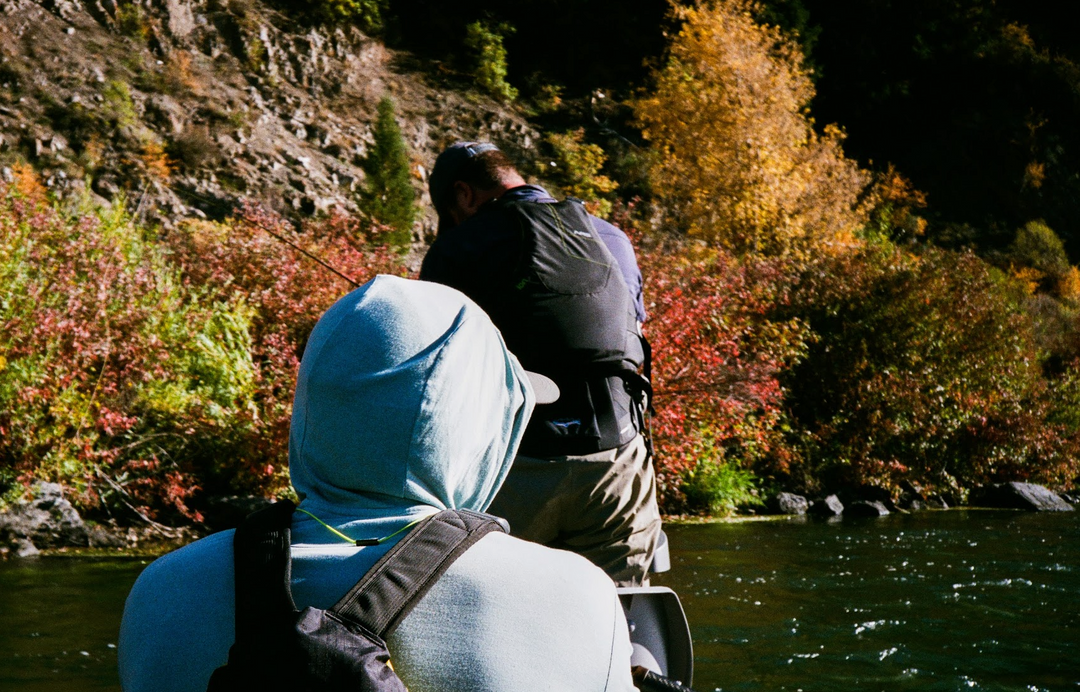Our Guide to Your First Fly Fishing Float

Congrats just got your first boat! Regardless if you got a drift boat, jet sled, or an inflatable raft there were a lot of things that weren’t explained to me that I figure out on my own when I first started floating which was a pain in the ass. I’m hoping this article will cut down your learning curve, give you some clear direction, and some action items so you know what you need to do to hit the water and have everything you need to have a great day fishing.
Most of the time fishermen are so eager to hit the water and use their new boat that they forget some minor gadget or potentially something more critical like a lifejacket that can result in a serious fine if they get popped by Fish and Game. Additionally, understanding your boat's ability to navigate challenging river conditions and carry all necessary gear is crucial for a successful and safe outing. We have lot of areas to cover so let’s get started.
Picking a River to Float
You got a boat and now you need to figure out where you wanna go for your first float. The biggest point that I cannot stress enough is make sure you pick a river that is appropriate for your skill level. If you’re an experience rower - the skies the limit - but if you’re new to rowing this will narrow your options down quite a bit initially. In general, most folks need about 5 trips for rowing to feel somewhat natural. While rowing on a small lake (little wind) or a pond is nowhere near as fun as a river, in my opinion, it is a really good spot to learn how the mechanics of the boat work so when you actually get on moving water, you’re not immediately panicked by what the hell to do.
If you don't have a small pond near by and you're only option is hitting a river first, you wanna look for a river that has a no whitewater and as little structure you'll have to to avoid. Slow glass like water is perfect for the first several floats. Understanding the river's current is crucial as it affects how well you can maneuver and control the boat, ensuring a safer and more enjoyable experience. The greater the CFS the faster you have to make decisions and when you aren’t proficient on the oars that’s when trouble starts brewing.
Use Local Fishing Report to Help Decide Where to Go
Most fly shops have some type of fishing report that you can check out to give you an idea of what the fishing or flows are like in that area to see if it's even worth your time making the drive out there. This is something that I do every time before I go out and float as I do some reconnaissance and call around the local shops, talk to friends that the fish there recently, hit up guides I know that are working those rivers to get the best gauge as to where I should actually go for the weekend. Again, if it's your first time pulling on the sticks focus more on low traffic, easy water than what the fishing is gonna be like.
Call a local shop ahead of time is a really good way to get that local knowledge but the best way is to go into that local shop once you get into town to get a more in-depth report. Ask what the trout have been eating and then buy some flies they recommend, grab a hat, or get some tippet to say thank you for giving you the intel. Some people snuff their nose at this because it's an extra $20-30 of stuff but if you're driving 7 hours and committing an entire week into a trip showing your gratitude for information and intel from a shop is a small price to pay to increase your odds of success.
Always make sure to show your local shops the love they deserve.
Just a quick highlight of a great shop putting being helpful above profit is Western River Guides in Dutch John, Utah. I was looking to do a content shoot there and I was asking about what the river was like the last couple days as I had heard they got up some rain and wasn't sure if that kicked up all the mud in the river or if it was a problem and one of the other shops I called in town gave me the obligatory “The fish have to eat.” comment. While this is true, that doesn't mean it will improve my odds a success if I go.
When I called Western Rivers, I asked them to you give me their honest opinion if they would drive the 3 1/2 hours it takes me to get there or if I should go somewhere else and Kat said "As much I'd love you to come down - I'd go somewhere else. The water is just too turbulent. It's so muddy and dirty and the fishing has just been beyond subpar." Now that's an incredible and honest shop and I've paid for guided trips with them several times because of that interaction.
Logistics

So you know what river you wanna hit first because you called around a local shop, you read the fishing reports, and maybe you’ve read some forums on what to expect for that specific section of stream. So now we turn getting to the river - Logistics.
Any dummy can punch in the location in Google maps and hit the road but one of the critical elements that you need to make sure you have taken care of before you get there is to know where the boat ramps are for put ins and takeouts. Most rivers are quite long and are broken up into sections.
If it’s a crowded boat ramp on Saturday in July and you have no idea how to back up a trailer the odds of running into an impatient dad or guide for messing up the flow are probably pretty high. Probably not the best place to go for your first several outings until you know how to confidently back up a trailer. You also wanna know where we putting in where we taking out this really determines the next phase within transportation, which is shuttling.
Shuttling
You get your boat in the water and then park the car. You need your car at the take out boat ramp and you will need to shuttle your vehicle there somehow. There are several ways you can do this all have their pros and cons but just so you’re aware so you can plan ahead.
-
Self Shuttle: Self shuttles include either having a separate vehicle or a shuttle bike so you can have one at to put in and another at the takeout.
-
Paid Shuttles: Once you start going to the more popular stretches of rivers that see a lot more traffic there’s frequently paid shuttles that you can utilize. So you only have to take one car you can save some gas, but then you need to set up and call a shuttle service in advance and make sure you have that lined up the day before at least if they’re full and you are banking on having a shuttle you could get screwed into a really long walk back - so plan ahead. It’s also important to know if there are no shuttles in the area so you can plan to self shuttle with another vehicle or a bike.
- Shuttles can cost anywhere from $20-$100+ depending on how far the shuttle is.
- It's also customary to tip shuttle drivers.
- Motoring: This is far less common in the Rocky Mountains and most places if you were to do this, you’ll get your tire slashed but in some locations, the rivers are big enough and wide enough and they can easily sustain motoring back up to where you put in places like the White River in Arkansas (or the Snake in Idaho) is a great example of this. Shuttles don't really exist Cotter because everyone there uses sleds and they put in and take out at the exact same place.
Lodging
Most folks have a couple rivers within a day trip away from where they live, but anything outside that is going to require setting up lodging. A lot of anglers are comfortable camping and there’s lots of different resources to help you find camping locations on BLM land or specific campgrounds on Google maps but you need to have this figured out ahead of time.
If you're camping don’t have one location in mind. You should have four spots planned so that if one doesn’t work you have three other backups that you can go to because there’s nothing more maddening than when your campsites are taken, and you’re driving around in the dark, trying to find a place to sleep after a long work day and a long car ride.
If you decide to go the hotel or cabin route make sure you call ahead and have a reservation for the family or fishing buddies. Most of these iconic trout waters out West can be booked out over a year in advance. Split a couple ways, a room can be pretty affordable and can feel like down right luxury after a full day on the water.
Legal Stuff
If there are 2 things that if you take anything away from this article, please please please read this Legal section and the following Safety section.
Every single state has their own rules and regulations around fishing. Ensuring that your boats and equipment are rated for the specific conditions and legal requirements of the state is crucial for safety and compliance. Most of them are pretty similar but they’re all slightly different.This is no where near exhaustive, but I'm just going to cover some of the bigger more common topics. I created an entire page that has the links and requirements for every single state that I try and keep updated as best I can so you can go to one place and get all the information you need before you hit the water. You check that out here.( insert link)
Boat Check Stations

I had no idea what a boat check station was when I first started floating and I didn’t understand what their purpose was in the grand scheme of things either. Essentially every single western state sets up boat stations at borders and throughout the state on major highways to inspect and essentially check that your boat is safe to put in their state river to help prevent aquatic invasive species (AIS).
These boat check stations physically inspect your boat, your anchor, and ask what body of water it’s been to most recently. The primary thing they’re trying to protect the river from is from zebra muscles which you can get from places like Lake Powell. This is not an option to skip. It is mandatory. They literally give you a receipt of their interaction to say they inspected your boat and you are good to go. You need to keep that on your person or in a boat box so that if you get stopped while you’re on the river by a state Fish and Game Warden, you can produce that to show your boat was inspected ahead of time.
This can be kind of annoying when you’re coming from Montana to Utah and you pass through states that you’re not even going to fish in you still have to stop and get your boat inspected. I was in Wyoming over the summer and a gentleman didn’t get his boat expected ahead of time and got stopped by a mandatory boat inspection at a major put in. He walked away with a $500 fine so when I say this is not worth the risk it isn’t, but more important to protect our resources.
Additionally, if you packed/rolled your inflatable boat up in the bed of your truck they need to be able to access it and check it. Try to put it as close to the tailgate as you can so you don't have to dig your boat out at the station.
Specific State laws and regulations
Again, I have another link that’ll touch on all of these things with the most updated date on there that you can find here but to just quickly go over some of those so you don’t have to another page. Every single state has their own specifics on the same stuff.
Fishing License
A lot of states are allowing a digital fishing license. You can conveniently order your fishing license online, download their app or take a screen shot in advance to ensure you are compliant. I always make sure I still have a physical copy printed as a back up.
Boat Decals
Most states require boat decals that are designed for specific types of boats and must be fixed accordingly. Some states mandate that they be placed in a certain location, while others just require them to be visible for rafts. Since I’m in the raft world, I try and have a removable piece of plexiglass that displays these things well but doesn’t stick to the raft. Drift boats proudly display these decals. These are physical stickers, so you need to plan ahead to buy them and have them shipped to your house. Most fish cops are understanding if you have the receipt, but it is better to be patient and wait till you have the physical items so you’re completely covered and there’s no chance of you getting a fine.
Boat registration
Each state is a little bit different. Some watercraft of any kind need registration, but most states don’t require registration if the boat won’t have a motor. Inflatable rafts, which are popular among fly fishing for their portability, stability, maneuverability, and low water access often fall into this category. Some states will require registration if it’s a hard-sided boat like a drift boat, but they won’t for a raft or a canoe. However, you need to check your local registration requirements to make sure.
Safety :
-

Lifejackets: You need a lifejacket - specifically a life jacket for every single person in the raft. States like Utah requires you to wear them while you’re in the boat compared to Montana just require you have them in the boat but you don’t have to actually be wearing them. Even though you aren’t wearing them, you can and will get popped if you don’t have a lifejacket and you get checked by Montana fishing game warden.
-
Throw Ropes: This isn't mandatory but I'd still recommend you have a throw rope. There's no downside outside of it losing a little bit of space and a little bit of money but the $70 is nothing compared to saving someone's life.
-
Spare Oar: This is another that isn’t a legal requirement but it’s one of these things that if you’ve ever snapped an oar halfway through your float and you only have one or to use you’ll understand why this becomes pretty important. Especially if you break one of your sticks on a stretch of river that has a lot of whitewater this can be extremely dangerous trying to navigate class rapids with a single oar. Another full size oar is great, but a smaller spare oar can also do the trick if it's your only option.
Additional Thoughts and info:
I hope this clears up some of the lack of information available and gives you the confidence that you can hit the ground knowing you’ve got all your boxes checked. For those interested in fly fishing, consider looking into inflatable boats and rafts designed specifically for fly anglers. These watercraft are portable, durable, and perfect for both casual and professional fly fishing experiences, enhancing your overall fishing adventure.
Check back regularly for when our inflatable fishing boats hit the market!




